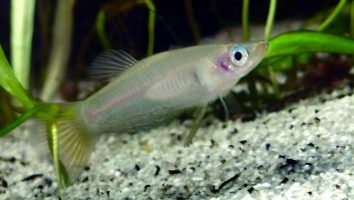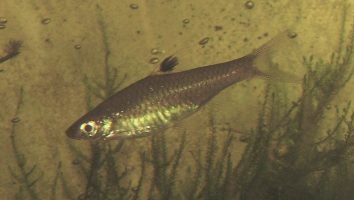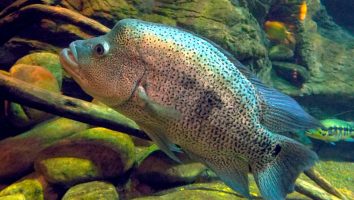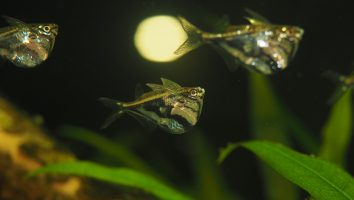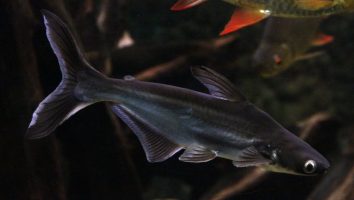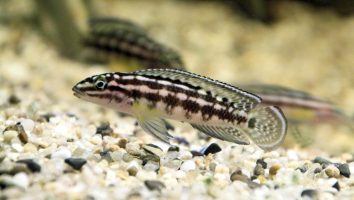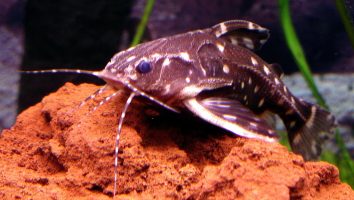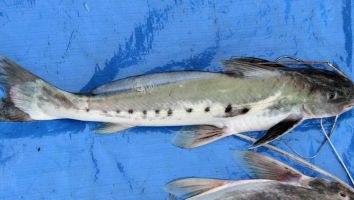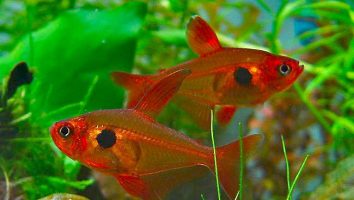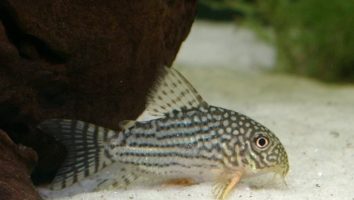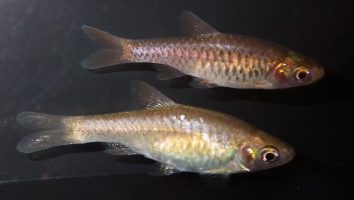The Panaque is a beautiful and unique freshwater fish that is perfect for the beginner aquarium.
They’re very easy to care for and are very peaceful, making them a perfect addition to any community tank.
But even though they’re easy to care for, there are still a few things you need to know to make sure they stay healthy and happy.
In this guide, we’ll teach you everything you need to know about Panaque care. Tank size, diet, lifespan, tank mates, and more.
Table of contents
Species overview
The Panaque (scientific name: Panaque nigrolineatus) is a type of armored catfish that is native to South America. They are most commonly found in the rivers of Venezuela and Colombia.
Panaque catfish are nocturnal animals that prefer to hide during the day and come out to feed at night. In their natural habitat, they live among the roots of plants and in caves or other dark places.
Panaque catfish are unique in that they have the ability to digest wood. This is something that most other fish are not able to do and is one of the main reasons why they are such popular aquarium fish.
Panaque catfish are relatively peaceful, although they can be a little nippy. They are also known to be quite hardy, which makes them a good choice for beginner aquarists.
Appearance
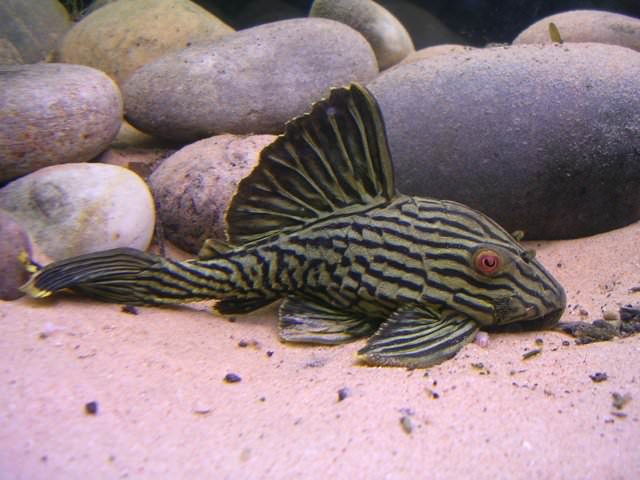
The Panaque is a freshwater fish that is easily recognizable due to its unique coloration and patterns.
The body of the Panaque is mostly a dark brown or black. This color is broken up by horizontal stripes that are a bit lighter in color. These stripes can be white, cream, or even yellow.
The fins on the Panaque are also a bit unique. The dorsal fin is rather tall and starts almost at the middle of the fish’s body. The anal fin is also tall and starts a little bit closer to the head.
Both of these fins have a dark base with a light stripe running down the middle. The caudal fin is forked and has a similar pattern.
The Panaque also has a very distinct head. The eyes are large and slightly bulging. They have a wide mouth that is filled with teeth that are designed for crushing.
The Panaque is a very large fish and can grow to be over two feet in length!
Lifespan
The typical Panaque lifespan is around 10 years. But, as with all fish, there are a number of factors that can impact their life expectancy.
For example, if they’re living in suboptimal conditions then their lifespan will be shorter. This includes things like poor water quality or a lack of food.
Stress is also a big factor. If they’re constantly being harassed by tank mates or they’re not getting along with the other fish then that will also shorten their lifespan.
Size
Panaque typically grow to be between 12 and 15 inches long, but have been known to reach lengths of up to 20 inches. These fish are fairly wide as well, so they require a tank that is at least 30 inches wide to provide them with enough swimming space.
Tank
Tank Size
The minimum tank size for a Panaque is 50 gallons. This fish gets big (up to 2 feet in length) and is very active so it needs the extra space to roam.
If you want to keep more than one Panaque in the same tank you’ll need an additional 50 gallons for each fish. These fish are also very active and need a lot of space to swim.
Water Parameters
Panaque have very specific water parameters that must be met in order for them to survive and thrive in captivity. They are native to South America and live in slow-moving waters with high dissolved organic content.
To recreate this environment in your aquarium, you will need to maintain the following water parameters.
- Water Temperature: 72-82 degrees Fahrenheit
- pH Levels: 6.0-7.0
- Water Hardness: 5-19 dGH
- Alkalinity Levels: 3-10 dKH
What To Put In Their Tank
The Panaque is a species of freshwater fish that’s native to South America. In the wild, they can be found in rivers and streams.
When it comes to setting up an aquarium for them, there are a few things you need to take into consideration.
The first is the substrate. These fish love to dig and sift through the gravel looking for food. A course substrate like sand or gravel is going to be the best option since it won’t hurt their delicate fins.
The second thing you need to consider is the plants. Panaques are known to nibble on vegetation, so you need to be careful about what you put in their tank.
We recommend sticking to hardier plants that can withstand a little bit of abuse (like Java moss or Hornwort).
The last thing to think about is the décor. These fish love to hide, so you need to provide them with plenty of places to do so. Driftwood, rocks, and caves are all great options.
Just make sure that whatever you use is securely in place. These fish are known to knock things over as they root around looking for food.
Common Diseases
Panaque are a hardy fish, but they’re not immune to disease. The most common illness that affects this species is definitely ich. This is a parasite that can affect any freshwater fish, and it’s quite common in home aquariums.
The most obvious sign of ich is the presence of white spots on the body, fins, and gills of your fish. If you see this, it’s important to take action immediately.
Ich is relatively easy to treat, but it can be fatal if it’s not caught early. There are a number of different ways to treat ich, so consult your vet or do some research online to figure out the best course of action.
Another disease that can affect Panaque is hole-in-the-head disease. This is caused by poor water quality and the presence of activated carbon in the tank.
This disease manifests itself as pits or holes in the head of your fish. While it’s not usually fatal, it can be quite gruesome to look at.
If you think your Panaque has either of these diseases, the best course of action is to consult a vet or do some research online. There are a number of different treatments for both ich and hole-in-the-head, so find the one that works best for you and your fish.
Behavior & Temperament
The Panaque is a peaceful fish that spends most of its time scavenging for food near the bottom of the tank. They are relatively active fish, but they are nocturnal so you won’t see them much during the day.
Panaque sifting through the substrate
Panaque are gentle fish that do well in community tanks. They are not aggressive and get along with most other fish. The only time you might see aggression is if another fish tries to steal their food.
These fish are unique in that they have the ability to eat wood. This is why they are often found near driftwood in their natural habitat. In the aquarium, they will eat wood if it is available, but they will also eat other things like algae and small insects.
Tank Mates
Panaque are one of the few freshwater fish that are actually compatible with saltwater fish. This is because they’re able to adapt to a wide range of water conditions.
Panaque are also peaceful by nature and won’t bother other tank mates. The only issue you might have is if you keep them with smaller fish. They might see them as food!
Other than that, there are tons of different fish you can keep with Panaque. Here are some of the best tank mates for this species:
- Clownfish
- Dottybacks
- Royal Gramma
- Yellow Tang
- Ocellaris Clownfish
- Blue Tang
- Green Chromis
- Purple Firefish
- Sixline Wrasse
Breeding
Panaque are a unique species of pleco that are not often bred in captivity. These fish originate from South America and typically live in slow-moving rivers with lots of woody debris.
Panaque are mouth brooders, which means that the female will carry the eggs in her mouth until they hatch. The male will help to clean the area where the eggs are laid and may also help to aerate them.
Once the eggs have hatched, the fry will be released and are on their own. The parents will not care for them.
To breed Panaque, you will need to set up a breeding tank that is at least 30 gallons in size. The water should be clean and well-filtered. A good quality sponge filter is recommended.
The water temperature should be between 75 and 82 degrees Fahrenheit. The pH should be between 6.5 and 7.5.
When ready, add two females for every male. The male will choose a suitable spawning site and begin to clean it. The female will then lay her eggs. Once the eggs have been laid, the male will fertilize them.
The female will then pick up the eggs and hold them in her mouth. She will carry them around for about three weeks until they hatch.
Once the fry have hatched, they should be fed small live foods such as baby brine shrimp or daphnia. They can also be fed finely-crushed flake food.
Conclusion
The Panaque is a great fish for anyone who wants something a little different in their tank. They’re unique looking and have some interesting behaviors that make them fun to watch.
They’re also relatively easy to care for, which is always a bonus.
If you’re looking for a fish that will add some visual interest to your tank and won’t be a hassle to take care of, the Panaque is a great option!

